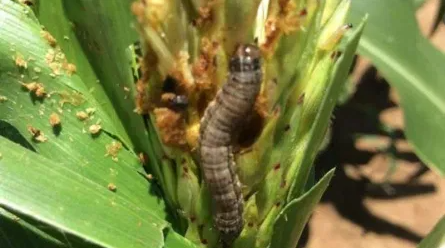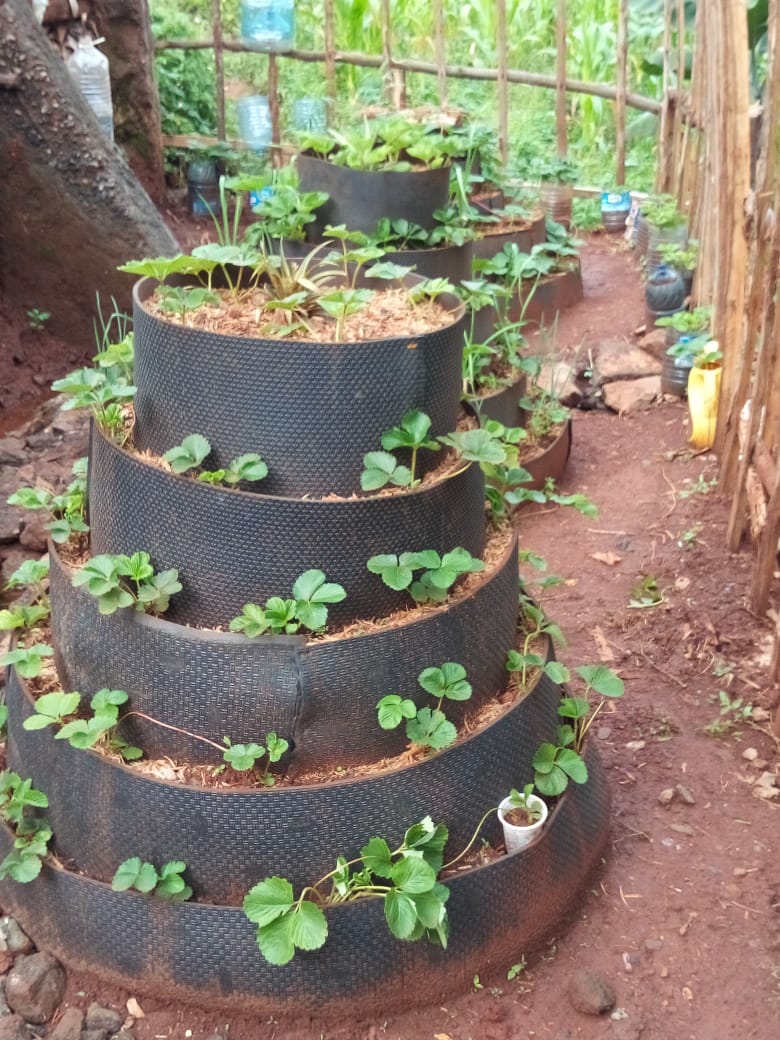By Emily Okello
In 2017, Nyamira County farmer Grace Mbera lost 80 per cent of her quarter-acre maize plantation to Fall Armyworm (FAW), harvesting 25kgs compared with 180 kgs in previous years. Her losses were so bad she stopped farming, but late last year, she planted maize again and, this time, used an insecticide, which now sees her forecasting a bumper harvest.
“My only source of income is what I produce from my quarter acre of land, but after incurring losses at the end of each planting season due to Fall Armyworm, and almost losing all my yields in 2017, I stopped farming for one year,”Mbera said.
Farming being the only means to feed her family and pay school fees for her children, in 2019, she resumed planting maize, but this time, she sought an expert opinion from an agro-dealer.
 Grace Mbera looking forward to a bumper harvest
Grace Mbera looking forward to a bumper harvest
Mbeta says she switched from using the hybrid seed variety to the pioneer maize seed 30G19 variety, thinking the hybrid was susceptible to FAW. However, during routine crop scouting, she noticed the holes on the leaves - FAW had attacked again. Desperate to rescue her crops and stop the infestation from spreading, she was referred to Kilimo Bora farmers, which advised her to spray the crop with Runner, an insecticide with methoxyfenozide as the active ingredient. It killed the pest after the first spraying.
Related News: Combined fungi-based biological spray controls five common crop pests
“If I had prior knowledge of how to suppress the infestation, my yields would have increased. After spraying the Runner, I now am on track for a bumper harvest, of around 630kgs, in July this year,” she said.
Over the past few years, FAW has threatened food security and the livelihood of millions of smallholder farmers in East Africa with infestation levels ranging from 30 per cent to 100 per cent.
According to FAO, in 2017, Kenya lost 80 per cent of its maize yields to the pest, in 115 districts in Uganda, farmers lost between 15 per cent to 100 per cent of maize grain, while Rwanda lost 91.7 per cent of the maize and sorghum planted in Nyamagabe district and all of the maize in Nyanza and Muhanga districts.
FAW continuously breeds where host plants are available throughout the year, attacking the maize at all stages of development. However, knowing how to detect the pest before it reaches the larvae (caterpillar) stage can solve 60 per cent of the problem.
Related News: EU moves to increase searches for pests on exports from Friday
“Maize field scouting, should be carried out at least weekly after germination, in a zig-zag direction checking for signs of the moth or the larvae, to determine control measures,” said Milton Ongeri, Chairperson of the Kilimo Bora Public-Private Partnership (CBO) in Nyamira County. “Egg masses, if detected, should be removed and crushed to prevent them from hatching. Other farmers use wood ash at earlier stages of infestation, and it works well for them. In Nyamira County, we have sensitized farmers on how to identify the pest in the field through physiology and morphology, flush/poop in maize whorl, and holes on leaves,” he said.
The development of FAW starts with a moth that lays an average of 100-300 eggs per two weeks on the underside of the maize leaves, resulting in semi-transparent patches on the leaves. Under warm conditions, the eggs hatch at a very high rate. Thus, maize should also be planted at the start of the rains to avoid the peak migration of the FAW adult moth. Crop rotation of cereals with legumes and tubers also interferes with its lifecycle.

As they mature into caterpillars, burrowing deep into the whorl, the worms become more destructive, and at night, if not controlled within two to three days, can destroy 80 per cent of the yields by reducing the grain quality.
An agronomist from Truvet Techno-System Limited advises that a systemic pesticide can control the moth, while alternating between Emmamectin benzoate and Indoxacarb insecticides to avoid pest resistance can suppress the larvae.
To identify a full-sized caterpillar, lookout for a dark head with an upside-down pale Y-shaped marking on the front. Each body segment has four dark spots forming a square.
Related News: Simple net prevents nurserybed from pests’ attack
The worms feed during the day and night, but are usually most active during the night.
“Understanding the, protective protocols, post entry duration, repeats if any, time of application, where to apply (whorl) and application rates are key in fighting FAW,” said Ongeri. Several insecticides recommended by the Pest Control Products Board can be used against the pest, he said, including Alfacyper M 20mls in 20 litres of water or Runner 10mls in 20 litres of water.
 By John Matava
By John Matava



 Grace Mbera looking forward to a bumper harvest
Grace Mbera looking forward to a bumper harvest












